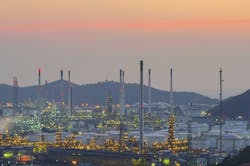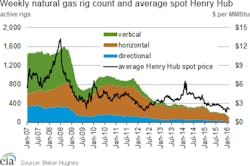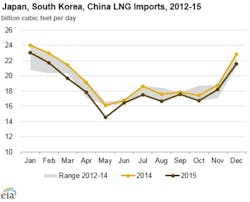Production will freeze, not be cut, says Saudi Arabia oil minister
HOUSTON — Feb. 23, 2016 — CNBC reported that Saudi Arabia’s oil minister Ali bin Ibrahim Al-Naimi said an oil production freeze may happen after March producers meetings. Speaking at the IHS CERAWeek conference, he also said the freeze is different from cutting production.
“Freeze is the beginning of a process, and that means if we can get all the major producers to agree not to add additional balance, then this high inventory we have now will probably decline in due time. It’s going to take time,” Naimi said. “It is not like cutting production. That is not going to happen because not many countries are going to deliver even if they say they will cut production, they will not deliver. So there is no sense in wasting our time seeking production cuts."
Naimi declined to comment on how the oil price would be affected by a cut. He also opposed the idea that Saudis were attempting to capture more market share, but were instead meeting customer demands.
British oil and gas industry faces uncertain future
LONDON — Feb. 23, 2016 — Depending on whether oil prices remain around $30 per barrel, 43 percent of British North Sea oil fields will lose money, claims a new Oil & Gas UK report.
A normal year sees new oil project spending at £8 billion ($11.3 billion), but the organization predicts spending will fall below £1 billion ($1.4 billion), according to CNN Money. Crude oil prices have fallen about 70 percent to around $33 per barrel since the summer of 2014.
The industry is dealing with excess oil supplies in the face of slowing demand, and CNN Money reports the recent decision by Russia and Saudi Arabia to freeze output is unlikely to boost prices soon.
British producers face higher costs than Saudi and Russian producers to pump oil. Although British production rose in 2015, revenues fell 30 percent.
Courtesy U.S. Energy Information Association
Northeast gas production increases 18 percent
WASHINGTON — Feb. 11, 2016 — Infrastructure improvements have likely contributed to an 18 percent increase in natural gas production in the Northeast over the past six weeks compared to the same period last year, according to the U.S. Energy Information Administration (EIA).
The region includes the Marcellus and Utica shales. Marcellus production has grown over the years, but pipelines have not kept up with this growth because of infrastructure project implementation time.
Projects coming online in late 2015 or early 2016 totaled 4.2 billion cubic feet per day of flowing-gas capacity. They included the Rockies Express Pipelines, the Texas Eastern Transmission Company’s OPEN project and Williams Transcontinental Pipeline’s Leidy Southeast project.
Asian LNG imports see first decline since 2009
Courtesy U.S. Energy Information Associaiton
WASHINGTON — Feb. 18, 2016 — The EIA said that Japan, South Korea and China experienced declines in liquefied natural gas (LNG) imports by an average of 1.0 billion cubic feet per day (Bcf/d) in 2015 compare to 2014. The three Northern Asian countries are the largest LNG importers in the world.
The decline was fueled by lower demand from the power generation sector, slower economic growth and lower-priced competing fuels.
The largest annual decline was in South Korea (10 percent), where coal-fired and nuclear power plants overtook gas-fired power generation. Japanese imports declined by 4 percent, while China’s dropped by 1 percent.




